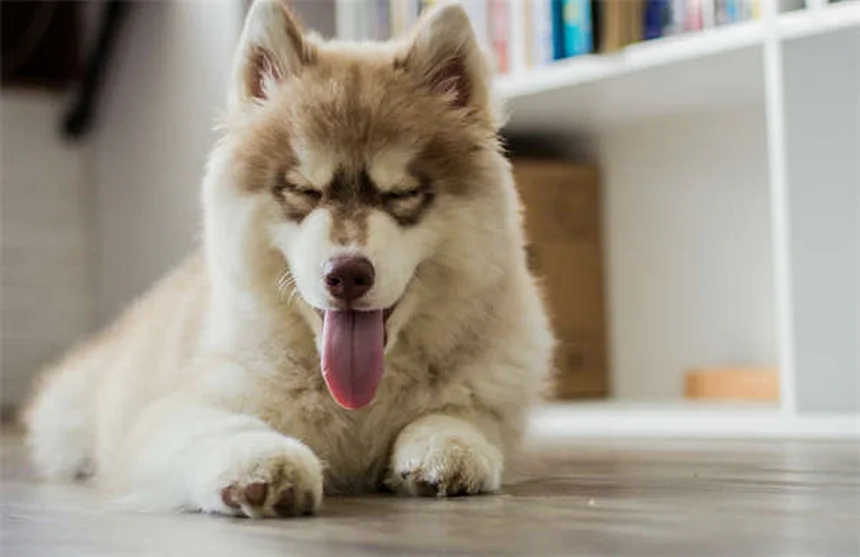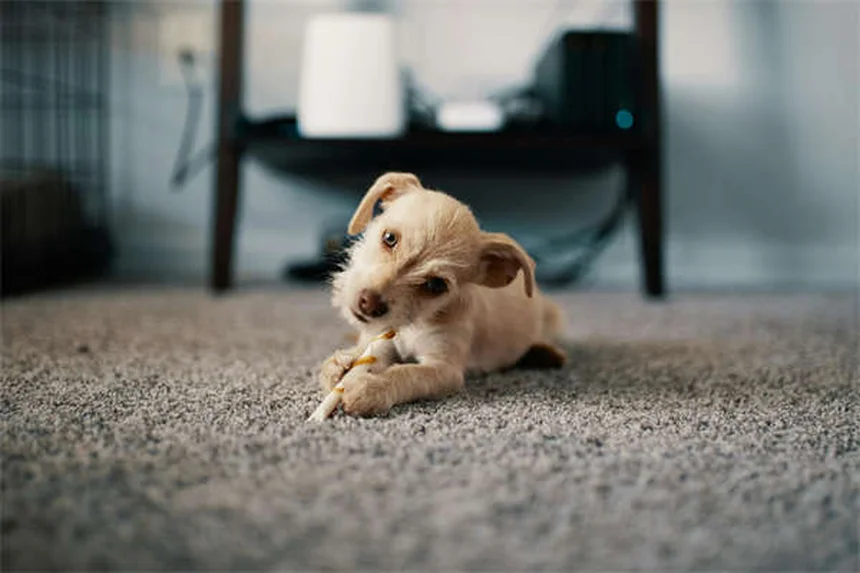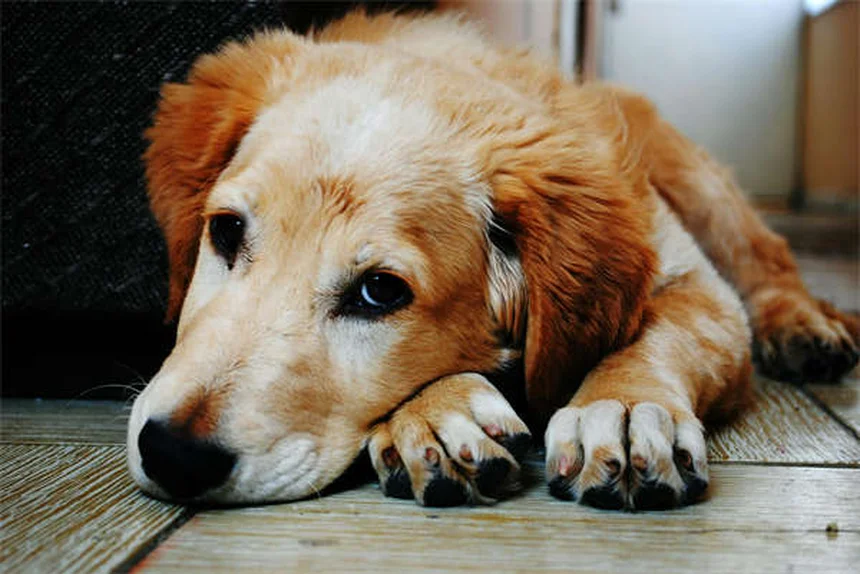Advertisement
What is dog agility training? The answer is simple: it's the most exciting way to bond with your pup while keeping them fit and happy! Whether you're looking for backyard fun or competitive thrills, agility training offers incredible benefits for dogs of all breeds and ages. I've seen firsthand how this sport transforms dogs - from boosting their confidence to keeping them in top physical shape. Think of it as an obstacle course adventure where your dog gets to jump, weave, and tunnel their way to better health. The best part? You don't need to be a professional trainer to get started. With some basic equipment and our step-by-step guide, you and your furry friend can begin this exciting journey today. Let's explore how agility training can become your dog's new favorite activity!
E.g. :5 Surprising Reasons Your Dog Has Dry, Flaky Skin (And How to Fix It Fast)
Advertisement
- 1、Why Dog Agility Training is the Ultimate Workout for Your Pup
- 2、Who Can Do Agility Training?
- 3、Getting Started with Agility Training
- 4、Advanced Obstacles Explained
- 5、Finding Local Agility Opportunities
- 6、Safety First: Protecting Your Pup
- 7、Making Training Fun for Both of You
- 8、The Hidden Benefits of Dog Agility Training
- 9、Agility Training for Special Needs Dogs
- 10、Agility Training Equipment Deep Dive
- 11、Training Through the Seasons
- 12、Nutrition for Agility Dogs
- 13、The Competitive Agility World
- 14、FAQs
Why Dog Agility Training is the Ultimate Workout for Your Pup
It's Like CrossFit for Dogs!
Picture this: your dog sprinting through tunnels, weaving between poles, and jumping hurdles with pure joy. That's agility training in action! As Sean Prichard, a certified canine fitness coach, puts it: "This isn't just exercise - it's a full-body workout that engages your dog's mind and body."
We're talking about serious benefits here:Improved cardiovascular health, better coordination, and stronger muscles. But here's the best part - while your dog thinks they're just playing, they're actually getting in the best shape of their life. And let's be honest, watching your pup master an obstacle course is way more entertaining than binge-watching TV!
Two Ways to Play
You've got options when it comes to agility training:
| Casual Training | Competitive Training |
|---|---|
| Backyard setup | Official courses |
| No rules, just fun | Timed runs with judges |
| Great for bonding | Chance to win titles |
Whether you're aiming for competition or just some backyard fun, the key is to start slow and make it enjoyable for your furry athlete.
Who Can Do Agility Training?
 Photos provided by pixabay
Photos provided by pixabay
Age is Just a Number (Mostly)
Ever wonder if your senior dog is too old for this? Here's the truth - while puppies under 15 months shouldn't compete, older dogs can absolutely participate with some adjustments.
Take Dr. Adams' 9-year-old dog for example. She's "semi-retired" but still enjoys modified courses with lower jumps. The secret? Tailoring the challenge to your dog's abilities. Just like humans, dogs need activities that match their fitness level.
Breed Doesn't Matter (Much)
Here's a fun fact: while Border Collies dominate competitions, any breed can enjoy agility training. The real key? Finding what motivates your dog. Food? Toys? Praise? Use whatever gets their tail wagging!
Did you know that some of the most entertaining agility dogs are actually mixed breeds? It's not about pedigree - it's about personality and training.
Getting Started with Agility Training
Baby Steps to Big Jumps
Think you can just throw your dog into an obstacle course? Think again! Here's how we recommend starting:
1. Let your dog explore the equipment at their own pace (yes, even if that means sniffing or peeing on it first - dogs will be dogs!)
2. Use high-value treats to encourage them through each obstacle. Chicken pieces work better than kibble here!
3. Start with simple setups before adding complexity. Remember - we're building confidence along with skills.
 Photos provided by pixabay
Photos provided by pixabay
Age is Just a Number (Mostly)
You don't need a professional setup to begin. Here are the basics:
- Adjustable jumps (start low!)
- A collapsible tunnel (the canine equivalent of a funhouse)
- Weave poles (start with just 3-4 poles)
Pro tip: For competitive training, you'll eventually need regulation equipment. But for backyard fun? Get creative with what you have!
Advanced Obstacles Explained
The A-Frame Challenge
This giant "A" shaped obstacle looks intimidating, but with proper training, your dog will love it. Start with a mini version and work your way up to the full 9-foot structure.
The key is teaching your dog to touch the yellow contact zones - it's like teaching them to use the stairs, but way more exciting!
Teeter Totter Terror?
Many dogs are initially scared of the teeter's movement. Here's how we help them overcome this:
First, stabilize the teeter so it doesn't move. Let your dog walk across it multiple times until they're comfortable. Then gradually introduce movement, starting with just a slight tilt.
Remember: patience is everything. Some dogs master this in days, others need weeks. Both are perfectly normal!
Finding Local Agility Opportunities
 Photos provided by pixabay
Photos provided by pixabay
Age is Just a Number (Mostly)
Did you know most communities have agility clubs or training facilities? Here's how to find them:
- Check with local humane societies (they often host classes)
- Search for "fun matches" - non-competitive events perfect for beginners
- Visit AKC or USDAA websites for official competitions
What if you're not ready for formal classes? Many parks now have basic agility equipment installed - perfect for casual practice!
When to Consider Professional Help
While you can certainly train your dog yourself, working with a certified instructor can help you:
- Avoid developing bad habits in your training technique
- Learn proper safety protocols
- Get access to professional-grade equipment
Think of it like hiring a personal trainer - sometimes that expert guidance makes all the difference!
Safety First: Protecting Your Pup
Pre-Training Health Check
Before starting any serious agility training, Dr. Adams recommends getting X-rays of your dog's joints. Why? Because preventing injuries is much easier than treating them.
This is especially important for breeds prone to hip dysplasia or other joint issues. A quick vet visit now could save months of recovery later!
Reading Your Dog's Signals
Dogs can't tell us when they're tired or sore, so we need to watch for signs like:
- Slowing down unexpectedly
- Hesitation at obstacles they normally ace
- Excessive panting between runs
Remember: even Olympic athletes need rest days. Your canine athlete is no different!
Making Training Fun for Both of You
The Joy Factor
At the end of the day, agility training should be about having fun together. If either of you stops enjoying it, something needs to change.
Try mixing up your routine - maybe add some hide-and-seek with treats around the course, or invite a friend's dog to join occasionally. Variety keeps things exciting!
Celebrating Small Wins
Did your dog finally conquer the tunnel without stopping? That deserves celebration! Keep training sessions positive with:
- Verbal praise ("Good dog!" in your happiest voice)
- Special treats reserved only for training
- Playtime with their favorite toy as a reward
Progress might feel slow sometimes, but those small victories add up to big accomplishments!
The Hidden Benefits of Dog Agility Training
More Than Just Physical Exercise
While we often focus on the physical benefits, agility training does wonders for your dog's mental health too. Did you know that dogs who participate in agility show fewer destructive behaviors at home? That's because they're getting both physical and mental stimulation in one fun package.
Think about it - when your dog learns to navigate an obstacle course, they're not just running. They're problem-solving, following cues, and building confidence. It's like giving them a puzzle that moves! My neighbor's anxious rescue dog completely transformed after six months of agility training - from shaking during thunderstorms to calmly waiting his turn at competitions.
Strengthening Your Bond
Here's something most people don't realize - agility training isn't just about the dog. It's about you too! The communication skills you develop during training translate to everyday life with your pup.
When we train together, we're learning each other's body language and building trust. You'll start noticing subtle cues in your dog's behavior that you never saw before. And they'll become more attuned to your signals too. It's a two-way street of understanding that makes your entire relationship stronger.
Agility Training for Special Needs Dogs
Adapting for Different Abilities
What if your dog has physical limitations? You'd be amazed at how adaptable agility courses can be! I've seen wheelchair-bound dogs complete modified courses with the biggest smiles.
The key is working with your vet to create a safe, customized plan. Lower jumps, wider tunnels, and softer surfaces can make all the difference. One trainer I know created an entire "senior dog" course with ramps instead of jumps and extra-wide weave poles. The older dogs loved it!
Therapy Through Agility
Ever considered how agility might help dogs with emotional trauma? Rescue organizations are increasingly using basic agility exercises to help shy or fearful dogs build confidence.
Simple obstacles like low platforms or short tunnels give these dogs small, manageable challenges where they can experience success. Watching a previously timid dog realize "I can do this!" is one of the most rewarding things you'll ever see. The transformation happens one obstacle at a time.
Agility Training Equipment Deep Dive
DIY vs. Professional Equipment
Let's talk about setting up your own course. While professional equipment is great, you can create effective training tools at home for a fraction of the cost. Here's a quick comparison:
| Item | Professional Cost | DIY Alternative |
|---|---|---|
| Jump Standards | $100+ | PVC pipes & buckets ($15) |
| Tunnel | $200+ | Kids' play tunnel ($30) |
| Weave Poles | $150+ | Broomsticks in ground ($5) |
The beauty of DIY equipment? You can adjust everything to your dog's size and skill level. Start small and upgrade as your dog progresses!
Safety Considerations for Homemade Equipment
Before you start building, let's talk safety. Those PVC jumps need proper weights so they don't topple over. And that kids' tunnel? Make sure it's secured so it doesn't collapse on your pup.
Here's a pro tip from my own experience: use pool noodles as bumpers on any hard surfaces. They're cheap, colorful, and provide great cushioning. I learned this after my golden retriever got a little too enthusiastic about a homemade jump!
Training Through the Seasons
Summer Training Tips
Training in hot weather requires special precautions. Did you know dogs can get heatstroke much faster than humans? Always check the pavement temperature with your hand before starting - if it's too hot for your palm, it's too hot for paws.
Early mornings or late evenings are best for summer sessions. And keep that water bowl handy! I like to freeze chicken broth into ice cubes as a refreshing reward during hot training days.
Winter Agility Solutions
Snow doesn't have to mean no training! Many agility enthusiasts set up indoor courses in garages or basements during winter months. You'd be surprised how much you can do with limited space.
If you're training outdoors in cold weather, watch for signs your dog is uncomfortable. Some breeds love the snow, while others (looking at you, Chihuahuas!) might need a sweater. The key is reading your individual dog's signals and adjusting accordingly.
Nutrition for Agility Dogs
Fueling Performance
What you feed your agility athlete matters more than you might think. Active dogs need proper nutrition to perform their best and recover quickly. But here's the thing - every dog is different.
Some do great on their regular diet with extra protein, while others need specialized performance formulas. The best approach? Track your dog's energy levels and consult with your vet. My friend's border collie actually performs better on fish-based food than chicken - who would've guessed?
Treat Strategies
Let's talk training treats - the secret weapon of every agility trainer! But not all treats are created equal. You want something small, smelly, and easy to digest.
Here's what works for me: chopped up hot dogs (microwaved to remove grease), freeze-dried liver, and cheese cubes. Rotate between a few high-value options to keep your dog interested. And remember - tiny pieces! You don't want a full belly slowing down your athlete.
The Competitive Agility World
Understanding Competition Levels
Thinking about entering competitions? The world of dog agility has something for every skill level. From "fun matches" where everyone gets a ribbon to serious national championships, there's a perfect starting point for you and your dog.
Most organizations have multiple divisions based on height, experience, and age. This means your petite poodle won't be competing against giant schnauzers, and your beginner dog won't face seasoned champions right away. It's designed to be fair and fun for everyone!
The Community Aspect
One of the best parts about competitive agility? The people! I've made lifelong friends at competitions - both human and canine. There's a real camaraderie among handlers who understand the challenges and joys of training.
Don't be intimidated if you're new. Most competitors are happy to share tips and cheer you on. We all remember our first competition nerves! The agility community tends to be incredibly supportive - after all, we're all just crazy dog people at heart.
E.g. :How to start with Agility training? : r/Dogtraining
FAQs
Q: Is my dog too old for agility training?
A: Absolutely not! While puppies under 15 months shouldn't compete, senior dogs can benefit tremendously from modified agility courses. I've worked with many older dogs who thrive when we adjust the obstacles to their abilities - like lowering jump heights or shortening tunnels. The key is listening to your dog's cues and consulting with your vet first. Remember my client's 9-year-old Labrador? She went from couch potato to agility enthusiast by starting with simple exercises and gradually building up. Age is just a number when it comes to keeping your pup active and engaged!
Q: Do I need expensive equipment to start agility training?
A: Here's the good news: you can begin with just a few basic items! For backyard training, I recommend starting with adjustable jumps (you can make these with PVC pipes), a collapsible tunnel (about $30 online), and some cones for weaving practice. Many parks now have basic agility equipment installed too. The fancy A-frames and regulation teeters can come later if you decide to compete. What matters most is creating a safe, fun environment where your dog can learn at their own pace. I've seen creative owners use broomsticks as jumps and kiddie tunnels - it's all about getting started!
Q: How often should I train my dog on agility courses?
A: As a general rule, I suggest 2-3 short sessions per week (about 15-20 minutes each) for beginners. Dogs learn best when training stays fun and doesn't become repetitive. Watch for signs your pup is getting tired - if they start slowing down or losing interest, it's time to wrap up. Remember, we want to keep them excited for the next session! One of my competition dogs does best with three weekly sessions, while my casual backyard pup is happy with one good session and plenty of playtime in between.
Q: Can small dogs do agility training too?
A: You'd be amazed at what small breeds can accomplish! I've trained everything from Chihuahuas to Dachshunds, and they often surprise people with their agility skills. The secret is adjusting the equipment - lower jumps, smaller tunnels, and closer weave poles make the course accessible. Some of my most enthusiastic students have been small dogs who love showing off their speed and cleverness. Just last month, a Yorkie named Bella mastered our mini-course faster than some large breeds. Size doesn't determine ability when it comes to agility training!
Q: How do I know if my dog is enjoying agility training?
A: Dogs make it pretty obvious when they're having fun! Look for these telltale signs: wagging tails when they see the equipment, eager responses to your cues, and what I call the "zoomies" after completing a course. My border collie does happy spins when he knows it's training time. If your dog seems stressed (panting heavily, avoiding obstacles, or tucking their tail), we need to slow down and make adjustments. The beauty of agility training is that when done right, your dog will think it's the best game ever - and you'll see that joy in every jump and tunnel run!

